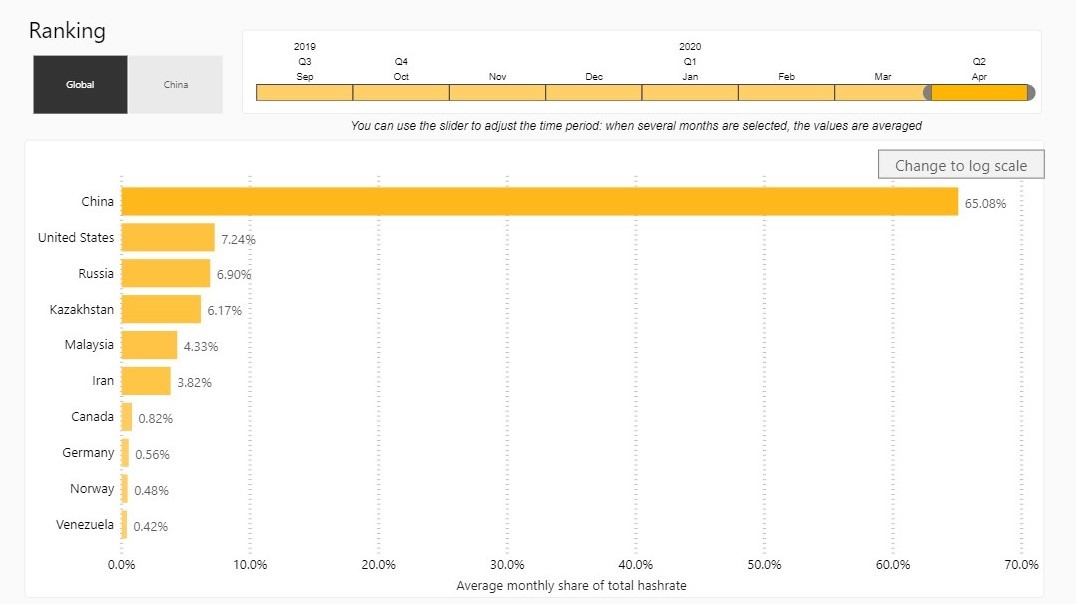
The increasing ubiquity and adoption of cryptocurrency has led to more people indulging in the process of mining it. According to a recent study by Cambridge Centre for Alternative Finance, Bitcoin-related power consumption has reached record highs this year. More than seven gigawatts (7 GW) of power (~63.32 terawatt-hours) are being pulled by the global mining industry. This power is roughly equivalent to that of seven nuclear power plants or 21.8 million solar panels.
Details on global hashrate were published as well. This metric quantifies the total amount of processing power dedicated to the process of mining cryptocurrency. Already, the global industry stands at around 120 exa-hash per second (EH/s) but analysts predict that that number is only meant to increase in the future. In terms of individual countries, China is leading the pack, contributing 65.08% to the average monthly global hashrate, followed by the United States with 7.24% in second position and Russia at 6.90% in third.

Seeing these figures, one would think about the adverse environmental impacts of mining. But the study clarified in the FAQ section that:
It is important to understand that energy consumption is not necessarily equivalent to carbon dioxide emissions and environmental pollution. For instance, one kilowatt-hour (kWh) of electricity generated by a coal-fired power station has a substantially different environmental footprint than one kWh of electricity produced by a solar park.
In order to determine Bitcoin’s carbon dioxide emissions, and thus its real environmental footprint, the actual energy mix (i.e. sources of energy used to produce electricity) needs to be examined more closely. While some mining facilities disclose the energy sources used to power their machines, the exact energy mix of the majority of mining farms remains unknown.
More recently, studies have shown that a growing share of total electricity consumption originates from renewable energy sources such as hydro, solar, and wind power. However, estimates are varying widely, ranging from approximately 20% of the total energy mix to more than 70%.
Moving forward, for the second phase of the project, Cambridge Centre for Alternative Finance plans on launching an interactive geographic map that tracks the location and the energy mix powering Bitcoin mining facilities as that would lead to a more accurate representation of the Bitcoin footprint.

















21 Comments - Add comment